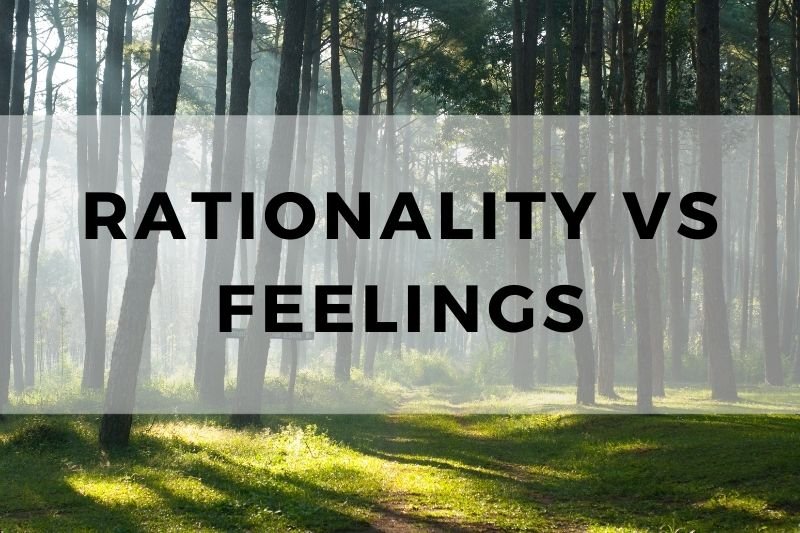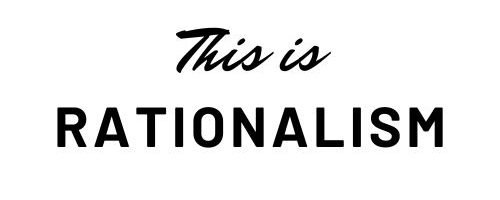
Every decision we make involves a balance between rationality and feelings. Rationality relies on logic, facts, and analysis to guide our choices. Feelings, on the other hand, are driven by emotions, instincts, and personal values. Both have their strengths and limitations, often pulling us in different directions.
Understanding how these two forces shape our decisions is crucial for making balanced and effective choices. In this article, we’ll explore the dynamics between rationality and feelings, their roles in decision-making, and how they can work together. By the end, you’ll have a clearer view of how to use both to your advantage.
Understanding Rationality
Rationality is the ability to think logically and make decisions based on reason. It involves analyzing facts, weighing pros and cons, and choosing the option that best aligns with objective goals.
At its core, rationality values clarity, consistency, and evidence. It aims to remove biases and emotions from the decision-making process. Rational thinkers rely on logic to guide their choices, prioritizing long-term benefits over immediate satisfaction.
Rationality helps us avoid impulsive decisions. It’s grounded in careful consideration and often leads to outcomes that are more predictable and stable.
However, pure rationality doesn’t always account for human emotions, which can sometimes lead to decisions that ignore important personal or social factors.
The Role of Feelings in Decision-Making
Feelings are immediate emotional responses to situations. They often drive quick, instinctual decisions. Unlike rationality, which seeks to distance itself from emotion, feelings arise from our subconscious and personal experiences.
Emotions can guide us toward what we value most. They help us connect with others and navigate social situations. In some cases, feelings provide insight that logic alone cannot offer, such as in moral or personal decisions.
Feelings can also be biased or misleading. They are often short-term and influenced by external factors. However, they still play a crucial role in shaping decisions by offering a sense of urgency or moral direction.
When managed well, feelings can enhance decision-making. They can prompt actions based on personal values and desires, which may not always be captured by rational thought.
Rationality vs Feelings: The Tension
#1. Basis of Operation
Rationality relies on logic, facts, and systematic analysis. It aims to find solutions based on evidence and clear reasoning. This approach seeks to minimize biases and subjectivity, ensuring decisions are made from an objective standpoint. Feelings, on the other hand, are emotional and personal. They arise from our inner experiences, instincts, and reactions to external stimuli. Rather than being grounded in fact, feelings are shaped by our emotional states and past experiences.
#2. Speed of Response
Rationality takes time. Logical thought processes demand careful consideration and often require us to evaluate multiple factors before making a decision. This slow, deliberate approach allows for better long-term outcomes, but it can also result in delays when quick decisions are needed. Feelings, by contrast, are immediate. They often drive us to make snap judgments based on emotional reactions. This speed can be useful in urgent situations, but it may also lead to hasty or impulsive decisions without fully weighing the consequences.
#3. Decision-Making Style
Rational decision-making is structured. It involves breaking down a problem, evaluating potential outcomes, and choosing the option that is most likely to achieve the desired goal. This methodical approach minimizes emotional interference. Emotional decision-making, however, is more intuitive. It’s guided by how we feel at the moment, such as desires, fears, or emotional attachment. This style of decision-making often prioritizes immediate emotional needs rather than long-term goals, which can lead to decisions based on short-term satisfaction rather than logic.
#4. Source of Motivation
Rationality is motivated by reason and goals. When we make decisions based on rational thinking, we do so with the intention of achieving specific, logical objectives. It’s driven by cause-and-effect reasoning, where actions are evaluated for their potential to move us closer to a desired outcome. Feelings are motivated by emotional needs and personal values. Emotional decisions often arise from what we care about or desire most, such as the need for comfort, love, or belonging. While rationality motivates through calculated goals, feelings can push us to act in ways that align with our emotional desires, which can be more variable.
#5. Conflict Resolution
Rational conflict resolution focuses on analysis and problem-solving. The goal is to find a logical solution that satisfies everyone involved. This method involves understanding the facts, weighing options, and applying reason to reach a compromise or solution. Emotional conflict resolution relies on empathy and emotional intelligence. It seeks to understand how everyone feels, allowing for resolution through emotional connection and understanding. While rationality focuses on logic, feelings prioritize emotional resolution, which can sometimes result in more compassionate or empathetic outcomes.
#6. Dependence on Context
Rationality tends to be universal. It applies logical rules that are meant to work across various situations, regardless of context. Whether making decisions in business, education, or personal life, rationality looks for patterns and generalizable solutions. Feelings are highly context-dependent. Our emotions fluctuate based on the situation, mood, and external influences. How we feel at a given moment shapes our decisions, which means feelings are more fluid and change with circumstances. This variability can lead to decisions that are more subjective but also more adaptable to our immediate environment.
#7. Predictability
Rational decisions are typically more predictable. Since rationality relies on logical processes and facts, it follows a clear, often predictable path. If we understand the data and variables involved, we can anticipate the likely outcome. In contrast, decisions driven by feelings are less predictable. They are influenced by subjective emotional states, which can change quickly. Feelings may lead us to act in unexpected ways, making emotional decisions harder to foresee and more volatile in their outcomes.
#8. Role in Creativity
Rationality supports creativity through structured thinking. It provides a framework for organizing ideas, solving problems, and testing hypotheses. Creative processes often require logical analysis to refine ideas, find solutions, and turn concepts into reality. However, feelings are equally vital in creativity. Emotional responses to art, music, or new ideas can spark innovative thinking. Creativity often involves a blend of logic and emotional expression, with feelings providing the inspiration and passion needed to explore new territories. Emotions can lead to breakthrough ideas that pure logic might not have conceived.
#9. Adaptability
Rationality adapts more slowly. It is based on facts, data, and patterns, and changes in rational thought occur when new information becomes available. Adapting a rational approach requires careful analysis and reflection on past decisions and outcomes. Feelings, however, adapt quickly. Emotional responses shift in real time, often reacting instantly to new stimuli or situations. This adaptability makes emotional decision-making more immediate and responsive but can also lead to inconsistency or erratic behavior if not managed carefully.
#10. Long-Term vs Short-Term Focus
Rationality generally favors long-term thinking. Decisions made through rational thought weigh future consequences and aim to achieve sustainable results. Rationality’s focus is on strategic planning, often looking ahead and considering how each decision impacts the future. Feelings, on the other hand, tend to focus on the short-term. Emotional decisions often prioritize immediate gratification or relief, driven by the desire to satisfy current needs or desires. While rationality looks ahead, feelings can be more about addressing the present moment. This difference can lead to tension when long-term goals conflict with emotional impulses.
The Balance Between Rationality and Feelings
Rationality and feelings are often seen as opposing forces. However, they don’t have to be in conflict. When used together, they can complement each other and lead to more informed and balanced decisions.
Rationality provides structure, helping us analyze situations logically and anticipate long-term outcomes. It encourages us to think through the consequences of our actions. Feelings, on the other hand, provide insight into our personal values, desires, and emotional well-being. They help us connect with others and respond to the world in a way that is emotionally satisfying.
In decision-making, finding a balance between the two can lead to better results. Rationality ensures that our choices align with our long-term goals, while feelings remind us to stay true to ourselves and consider our emotional needs. For example, in career decisions, rationality can help us assess job prospects, while feelings can guide us toward a role that aligns with our passions and personal values.
The key is not to ignore one or the other but to integrate both. Rationality can guide us through complex problems, while feelings can motivate us to take action when it matters most. By balancing both, we can make decisions that are not only logical but also fulfilling.
Examples of Rationality and Feelings Impacting Our Daily Lives
#1. Making Financial Decisions
Rationality drives us to plan budgets, invest wisely, and avoid impulsive purchases. We analyze data, compare prices, and assess future returns. Feelings, however, often influence spending habits. Emotional desires like comfort or status can lead to overspending or impulsive buys. Balancing both is crucial for long-term financial health.
#2. Conflict Resolution
In conflicts, rationality helps identify the problem, weigh solutions, and find compromises. It focuses on the facts and the best logical outcome. Feelings guide us to empathize with others and consider their emotional states. A balance allows for fair solutions that address both practical and emotional concerns.
#3. Career Choices
Rationality in career decisions focuses on job stability, salary, and growth potential. We analyze job markets and opportunities. Feelings guide us to consider personal satisfaction, passion, and workplace culture. By combining both, we make career choices that are both practical and fulfilling.
#4. Health and Fitness
Rationality encourages us to follow proven health guidelines, track progress, and maintain routines. It helps us set goals and make sustainable changes. Feelings influence our motivation and determination. Emotional satisfaction from exercise or the desire for self-care can drive us to stay consistent.
#5. Relationships
In relationships, rationality helps us communicate effectively, set boundaries, and solve problems logically. Feelings fuel our love, care, and emotional connection with others. Emotions influence decisions like commitment and trust, while rationality ensures we make decisions that are healthy and beneficial in the long run.
#6. Time Management
Rationality helps us organize tasks, set priorities, and use time effectively. It encourages planning and scheduling. Feelings can interfere with time management, especially when we procrastinate or avoid tasks that cause stress. Balancing both helps us stay productive while maintaining emotional well-being.
#7. Ethical Dilemmas
Rationality guides us to consider the consequences of our actions and the fairness of our decisions. It encourages us to think about the greater good. Feelings drive our sense of right and wrong, often influencing our moral choices. Combining both ensures we make ethical decisions that are logical and aligned with our personal values.
Closing Thoughts
Rationality and feelings both play essential roles in our decision-making process. Rationality provides structure, logic, and long-term focus, while feelings offer emotional depth and personal insight. The key to making well-rounded decisions lies in balancing both.
By integrating rational thought with emotional awareness, we can navigate life’s complexities more effectively. Whether in financial choices, relationships, or ethical dilemmas, understanding when to rely on each can lead to outcomes that are not only logical but also meaningful. Ultimately, rationality and feelings can coexist, working together to guide us toward better decisions.
